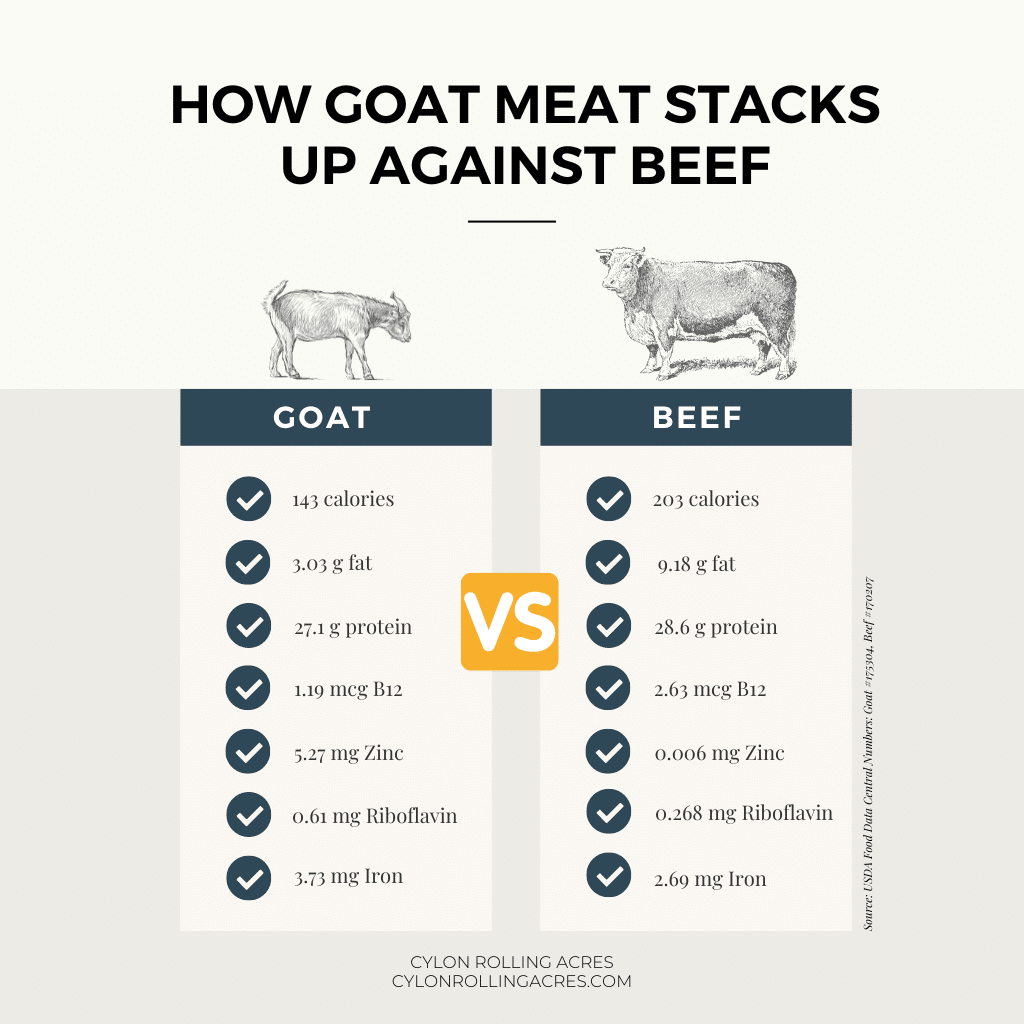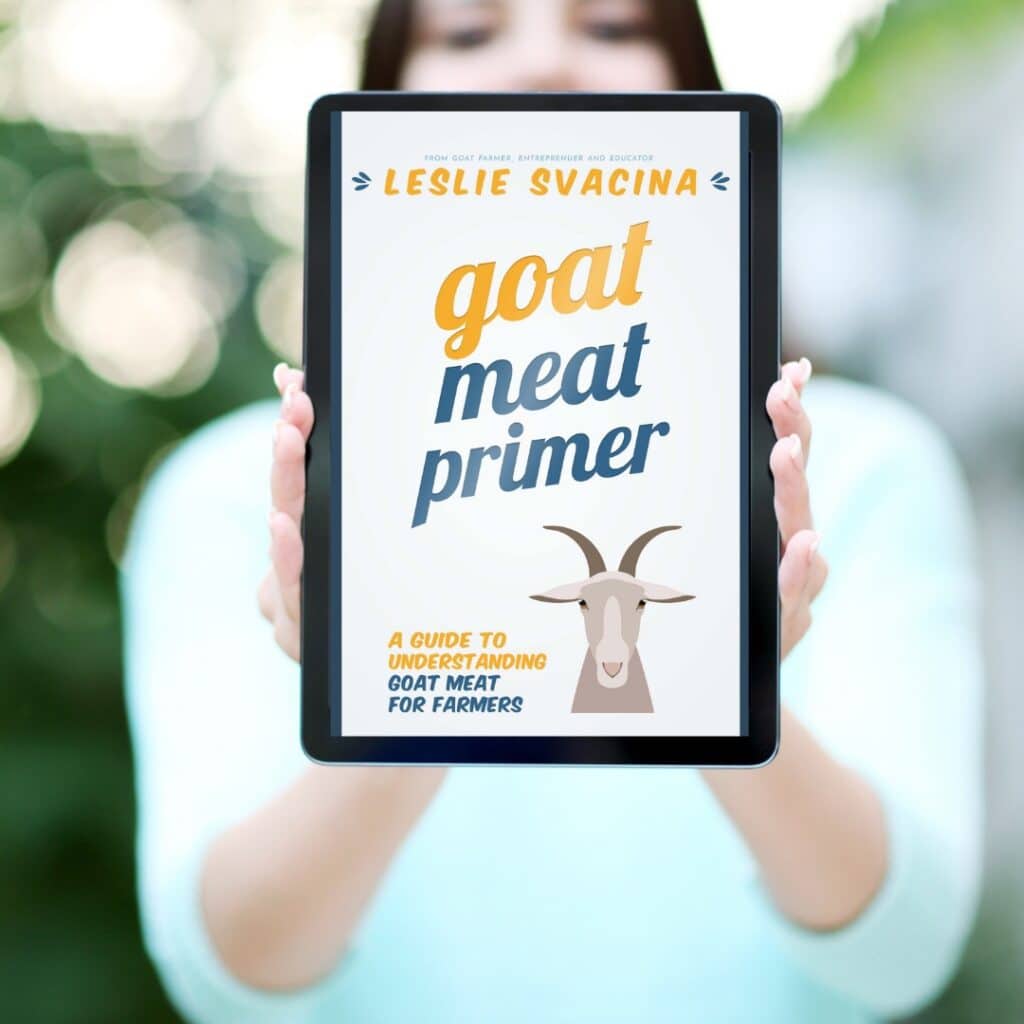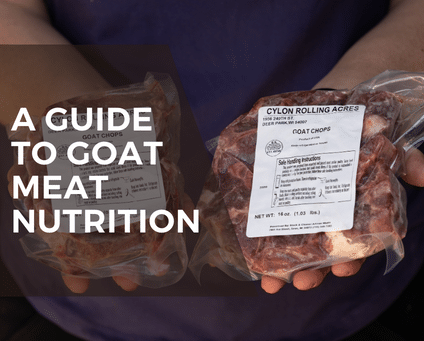I have a confession to make. When I started raising meat goats 10 years ago, I hardly knew anything about goat meat! And I wasn’t alone.
So many farmers and ranchers who raise meat goats know very little about the meat, largely because of a lack of information widely available. As we grew our business and started selling the actual meat directly to customers, I learned a lot and came to understand that there’s SO much to know about goat meat, especially when it comes to its health benefits.
Table of contents
Introduction
It’s probably no surprise but the goat meat industry is relatively young compared to those for beef, pork, lamb etc and as such, the USDA has limited nutritional information available for goat meat. For example, it accounts for only a handful of cuts and preparations while it has nutritional information for more than 500 variations of cuts of beef.
Nevertheless, when considering the nutritional value of goat meat it’s important to consider the USDA serving size of 100 g or 3 ounces. Also, the FDA states that 20% Daily Value (DV) or more of a nutrient per serving is considered high, while 5% DV is considered low. DV percentages are based on the DV tables set by the US Food and Drug Administration National Institutes of Health.
What Makes Goat Meat Healthy
As a red meat, goat is nutrient dense while being incredibly lean, low in fat and low in calories – one serving contains just 3 g of fat and only 143 kcal. It also packs a punch in the protein department with 27.1 g per serving, which is more than half the recommended daily value.
In addition, studies have shown that pasture-raised goats (fed a diet of grass and forage) result in healthier goat meat with better fat quality and an increased level of essential nutrients.
A Nutrient Powerhouse
Goat meat is packed with essential nutrients, including Vitamin B12 for converting food into energy, Zinc for nervous system function and reproduction, Riboflavin for red blood cell formation, and Copper for bone, collagen, and connective tissue formation.
More in depth information about the essential nutrients in goat meat can be found in my Goat Meat Primer ebook.
Goat Meat vs. Beef
Generally, a serving of goat meat is lower in fat and calories than a serving of beef, but comparable in terms of protein and higher in other essential nutrients.

Ways to Cook Goat Meat
Goat meat is incredibly versatile and can be cooked in a variety of ways, taking on different flavors and textures depending on the dish. As a good rule of thumb the meat of young goats tends to work well in all types of recipes, while the meat of older goats lends itself more to low and slow cooking applications for maximum tenderness.
Goat meat can be slow roasted, braised, stewed, fried, or grilled. My Goat Meat Nutrition + Cooking Canva Templates are a great way to share more about how to cook goat meat and its nutritional benefits with your customers!
Final Thoughts
Meat goats are one of the few species of livestock in the U.S. that doesn’t have a federal marketing order, which means there hasn’t been any large-scale effort to build the industry or emphasis put on research and promotion with goat meat on how it’s graded, cooked, and consumed. Yet, it’s one of the fastest growing proteins in demand.
My Goat Meat Primer ebook contains the following, pulled together from resources and knowledge I’ve gained over the years so you don’t have to do the work I did.
- An introduction to the industry
- Consumer preferences and trends
- How to estimate meat yields, common cuts, and more
- Goat meat quality research
- In-depth goat meat nutrition information
- Safe handling and cooking techniques for goat meat
- Other resources


LEAVE A COMMENT
Comments